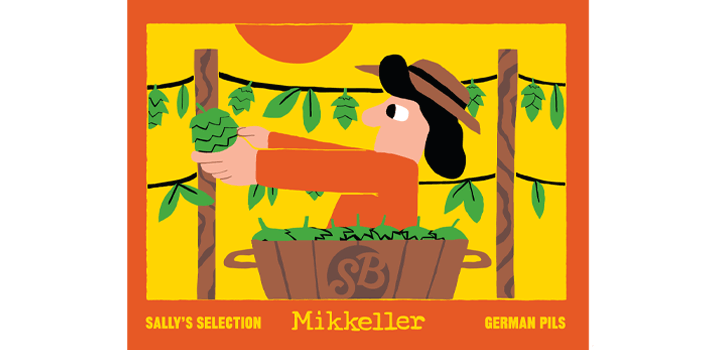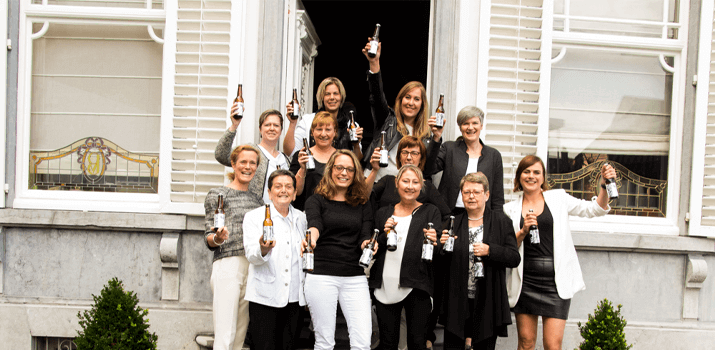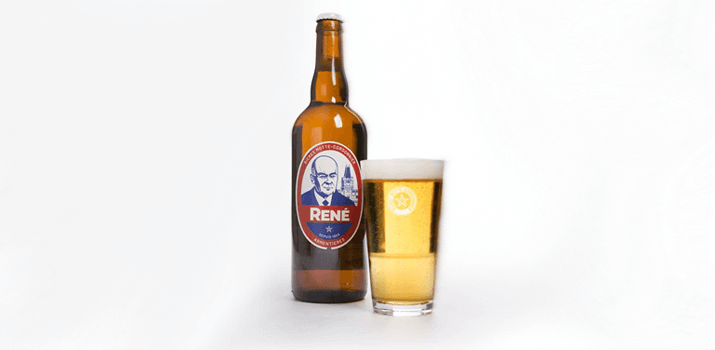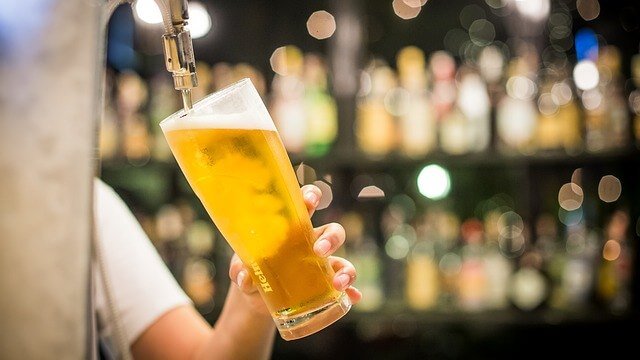BHU Week 18: Comparing major beer styles
English IPA vs. American IPA
The famed IPA. Arguably the most-loved beer style in the world (if we're not counting lagers) the India pale ale is single-handedly responsible for our current infatuation with all things hops. This style came to be in the late 1700's by adding more hops to a classic pale ale so that it could endure the journey from the UK to the British colony in India. The result was a wonderfully hoppy drink. The style was eventually adopted by American brewers in the 1970's who used American ingredients and hops. Long deprived of hoppy beers, American drinkers couldn't get enough of the bold flavours that they brought and, as Americans are wont to do, started chucking more and more hops into their brews and the American IPA was born.
English IPA The English IPA is typically rather malty but well-balanced with bittering hops and distinct aromas and flavours of spicy and earthy English hops. The English IPA is generally fermented with English yeast strains which give off fruity esters.
American IPA The American IPA displays the resin, pine, citrus, and floral aromas and flavours of American hop varieties. It is more assertively bitter than its English counterpart but still retains a bit of balance from a solid malty backbone. American IPAs come in a number of varieties like a West Coast, East Coast or Double IPA.
Bohemian Pilsner vs. German Pils
We can thank the Czechs for first creating the most famous lager style in the world: the Pilsner. First brewed in 1842 in the city of Plzen (or Pilsen), Pilsner Urquell is recognised as the first Pilsner ever brewed and the style features the local Saaz hop. The popularity of the style spread quickly throughout the region so the Germans created their own version using local malts and German hops. More than likely, in Germany, the word "Pilsener" or "Pils" would be used out of deference to the original Bohemian style.
Bohemian Pilsner The Bohemian or Czech Pilsner capitlises on the region's soft water which gives a clean, crisp finish and a great platform for a complex caramel malt profile. The Saaz hop is featured prominently which results in a lovely floral and spicy character and a soft, clean impression.
German Pilsener The German Pilsener is generally lighter-bodied and dryer with a more apparent bitterness than its Bohemian counterpart. Harder water in Germany gives the noble German hops like Hallertau and Tettnanger a bit more character.
Belgian Witbier vs. German Weissbier
Historically, brewing beer was largely dependent on the local crops as ingredients. With Belgium and Bavaria being areas where wheat grew aplenty, it's no surprise that it was widely used in creating these styles. The Belgian witbier's predecessor can be traced back some 400 years ago. It sadly died out in the 1950's but was ultimately revived by Pierre Celis--the creator of the world-renowned Hoegaarden. The Belgian witbier gets much of its spicy, citrusy flavour from the addition of spices and fruit as well as the spicy character given off by its Belgian ale yeast strain. The German weissbier, however, differs in a number of ways. This famous Bavarian beer style is distinguished by its clove and banana flavours which are actually byproducts of the ale yeast strain, as opposed to any other ingredients being used. Let's taste and compare a couple of the most famous ones!
Belgian Witbier
Celis White
Style:
Belgian Witbier
Style Standards:
The Belgian witbier is moderately sweet with a bit of spicy character from the wheat. Pale straw in colour and hazy from the wheat, the witbier is typically a bit tart with noticeable coriander and orange notes. Zesty and sweet, it's very refreshing.
Fermentation:
Top fermenting--Ale
Brewery:
Celis White
Appearance:
Golden straw colour, creamy white head that leaves lovely lacing, rather hazy.
Aroma:
Citrus, white pepper, spice and coriander. Some tartness and grainy spicy malts.
Flavour:
Similar flavours as on the nose: orange, lemon, spice, coriander and a hit of tartness. A bit sweet but find a bit of balance from the spicy character.
Mouthfeel:
Medium-light body with effervescent, refreshing carbonation and a creamy character. Refreshing!
Overall Impression:
The Celis White is as classic as it gets for Witbier. A bit on the sweet side that struggles for a little balance yet it's a fantastic example of the style. Plenty of flavour so it's not boring!
Serving Temperature:
7-10?C
Glassware:
Pint glass or Pilsener glass
Storage Temperature:
4-7?C
Max Length of Storage:
2-6 months
German Weissbier
Schneider Weisse Tap 7
Style:
Weissbier
Style Standards:
Fermentation:
Top fermenting--Ale
Brewery:
Schneider Weisse--Munich
Appearance:
Deep amber-brown colour, a bit of haze and a billowy white head which dissipates rather quickly leaving a bit of lacing down the side.
Aroma:
Bananas, cloves, peppery spices, a bit of doughy breadiness.
Flavour:
Similar to what's on the nose with a hint of vanilla and a rich, fruity taste. A bit of tartness is lifted by the carbonation.
Mouthfeel:
Medium-bodied with a creamy carbonation. Some viscosity and a slightly bitter finish which leaves for a clean and more-ish drinkability.
Overall Impression:
Delightfully complex they don't call this one the "original" for nothing. It's very drinkable and flavourful. Nobody does weissbiers better than the Bavarians.
Serving Temperature:
7-10?C
Glassware:
Pint glass or Weizen glass
Storage Temperature:
4-7?C
Max Length of Storage:
2-6 months
Wow--that was pretty delicious to read about, wasn't it? You should be able to tell the differences between these famous beer styles now. But if you can't, well, practice makes perfect! We'll see you next week at Beer Hawk University where we'll discuss the difference between cask and keg. Cheers!





